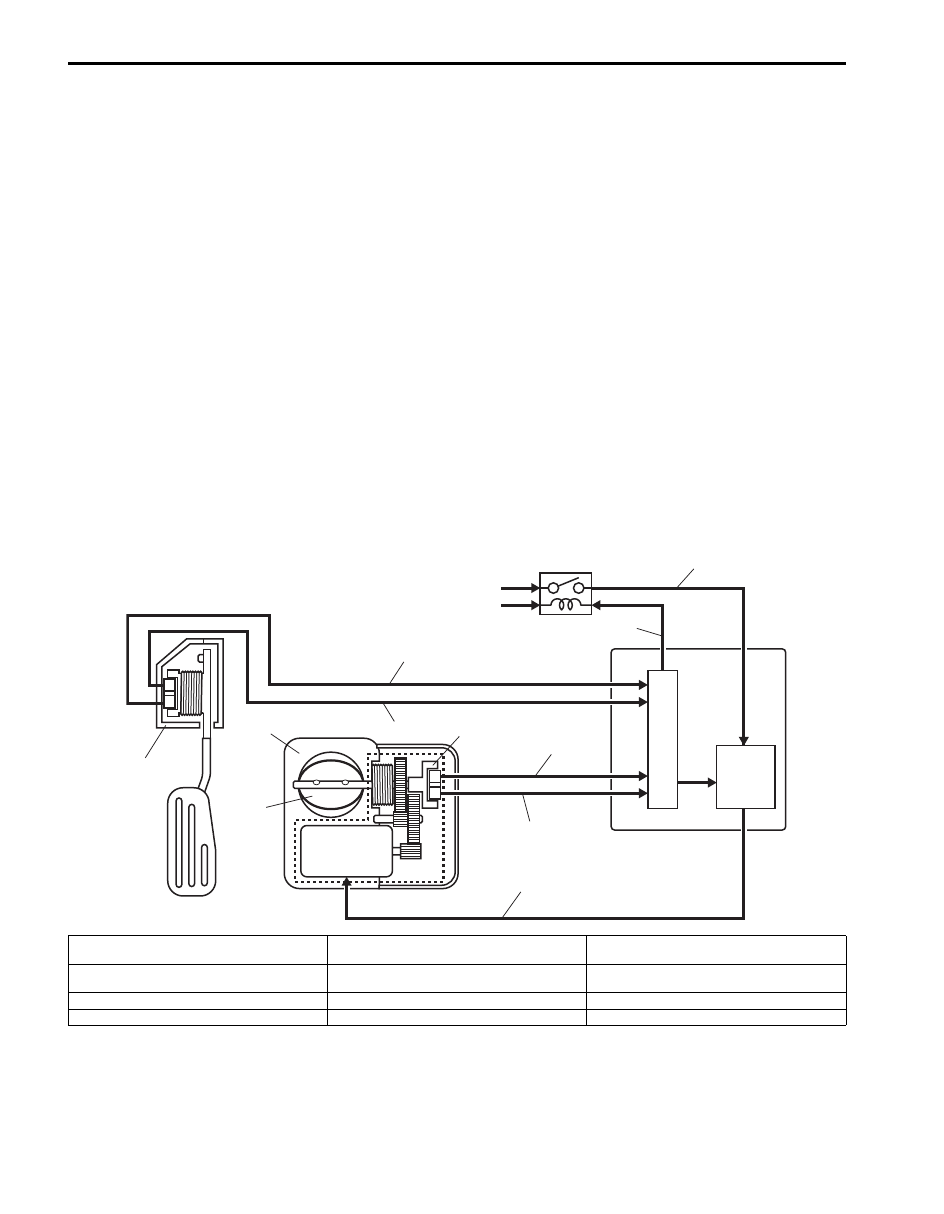Suzuki Grand Vitara JB416 / JB420 / JB419. Manual - part 16

1A-11 Engine General Information and Diagnosis: For Petrol Engine Model
Electric Throttle Body System Description
S6JB0A1111007
The Electric Throttle Body System consists of electric throttle body assembly, accelerator pedal position (APP) sensor
assembly, ECM and throttle actuator control relay.
Among them, assembly components are as follows.
• Electric throttle body assembly: throttle valve, throttle actuator, 2 throttle position sensors
• Accelerator pedal position (APP) sensor assembly: Accelerator pedal, 2 accelerator position sensors
Operation Description
ECM (5) detects opening (depressed extent of pedal) of the accelerator pedal based on signal voltage of the
accelerator pedal position (APP) sensor (1) and using that data and engine operation condition, it calculates the
optimum throttle valve opening. On the other hand, it detects the throttle valve opening based on the signal voltage of
the throttle position sensor (3) included in the throttle body (2) and compares it with the above calculated optimum
throttle valve opening. When there is a difference between them, ECM controls the duty ratio (100% – 0%) of throttle
actuator control according to this difference to drive the throttle actuator (motor) (4) included in the throttle body. When
there is no difference, ECM controls the duty ratio of throttle actuator control to about 15% to maintain the throttle
valve opening. In this way, the throttle valve (17) is opened and closed to achieve the optimum throttle valve opening.
In this system, as the throttle position sensor and accelerator pedal position (APP) sensor have 2 sensors (main and
sub) each, highly accurate and highly reliable control and abnormality detection are assured. Also, when ECM detects
an abnormality in the system, it turns off the throttle actuator control relay (8) to stop controlling the throttle actuator.
When the throttle actuator control relay is turned off, the throttle valve is fixed at the opening of about 7
° from its
completely closed position (default opening) by the force of the return spring and open spring included in the throttle
body.
This throttle body is not equipped with IAC valve for idle speed control. Idle speed control is done by the throttle
actuator which opens/closes the throttle valve.
4
1
2
17
3
5
6
7
8
9
10
11
12
13
14
15
16
18
I4RS0B110007-02
6. CPU
11.
Accelerator pedal position (APP) sensor
(main) signal
15. Drive signal of throttle actuator
7. Drive circuit of throttle actuator
12.
Accelerator pedal position (APP) sensor (sub)
signal
16. Power supply of throttle actuator
9. From “THR MOT” fuse
13.
Throttle position sensor (main) signal
18. Control signal of throttle actuator control relay
10. From main relay
14.
Throttle position sensor (sub) signal